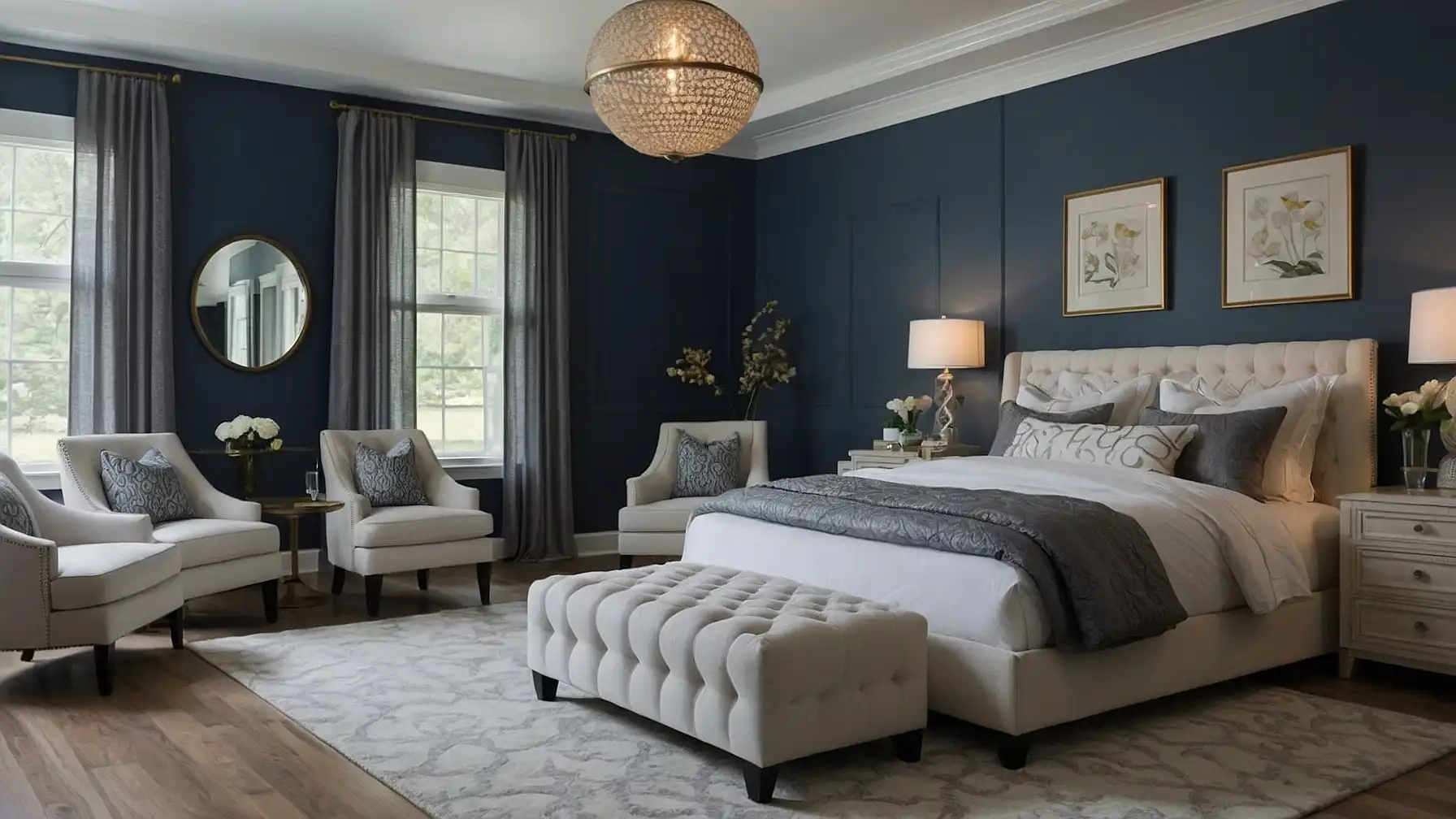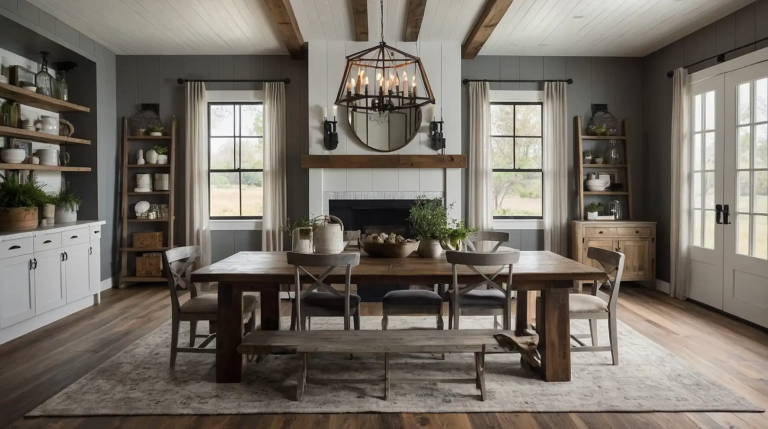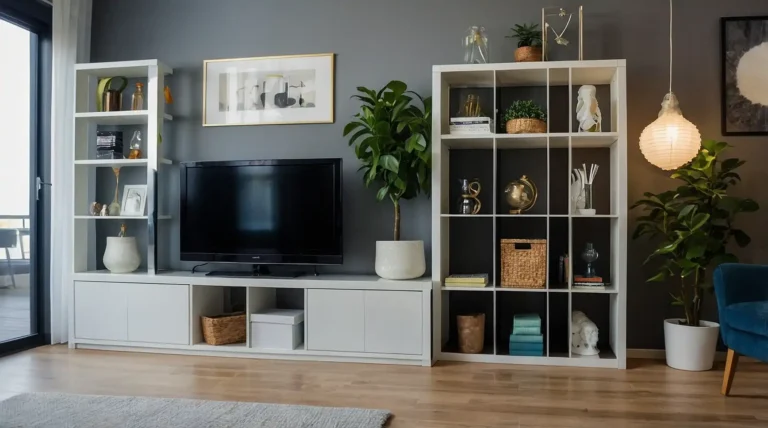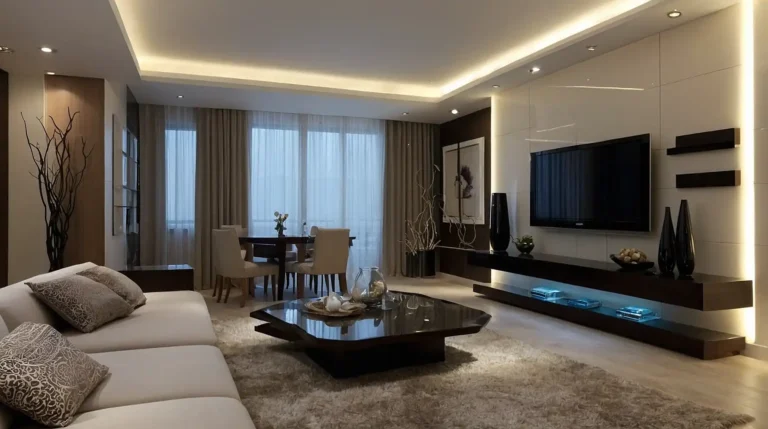27 Best Paint Colors for Master Bedroom: Transform Your Space with These Soothing Hues
Choosing the perfect paint color for your master bedroom can transform it from just a place to sleep into your personal sanctuary.
The right shade sets the mood, affects your sleep quality, and showcases your personality.
With thousands of paint options available, finding that ideal color might seem overwhelming.
Don’t worry—we’ve curated the 27 best paint colors that interior designers consistently recommend for master bedrooms.
Whether you prefer calming neutrals, bold statements, or something in between, this list has something for every style.
Let’s explore these bedroom-transforming hues!
1: Soft Sage Green
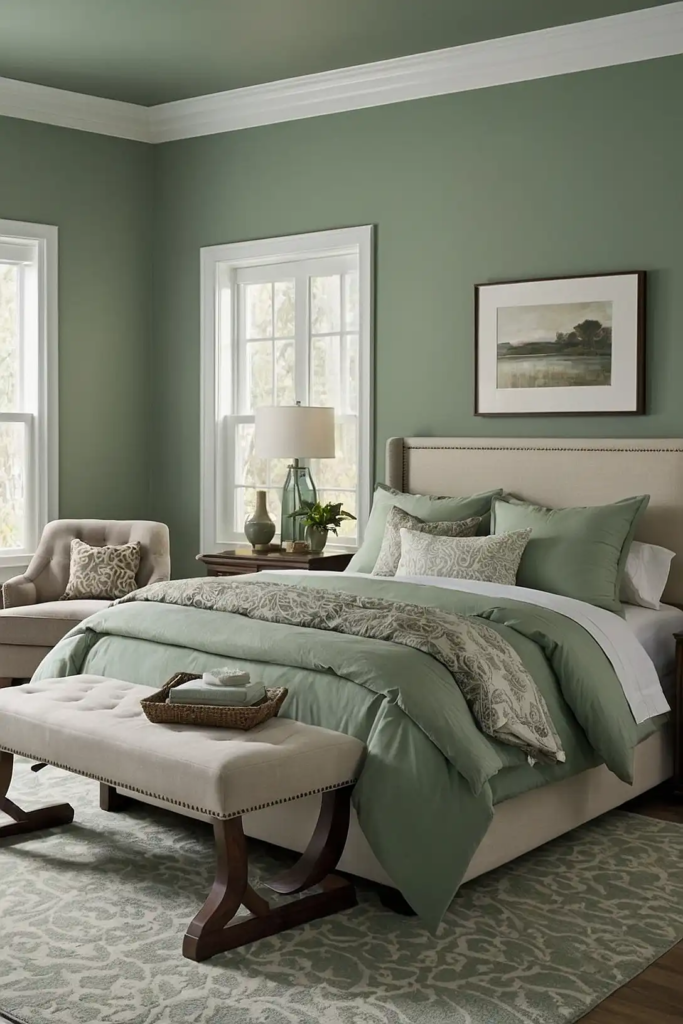
This versatile, nature-inspired hue brings the outdoors in while maintaining a sense of calm.
Soft sage works beautifully with natural wood tones and creates a refreshing yet relaxing atmosphere.
Pair it with cream accents and golden lighting fixtures for a balanced look.
This shade also transitions well between seasons, feeling cool in summer and cozy in winter.
2: Classic Navy Blue
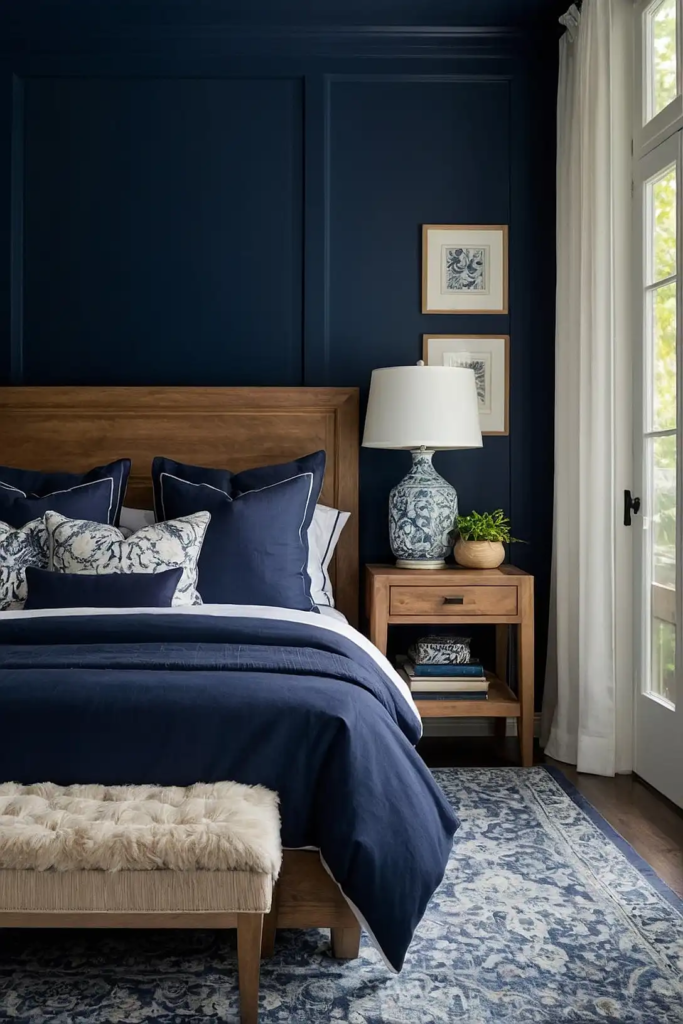
Navy delivers sophistication and depth without the harshness of black.
This timeless color creates a cocoon-like effect that promotes better sleep while adding dramatic flair.
You can balance navy with white trim and light-colored bedding to prevent the room from feeling small.
It works particularly well in rooms with ample natural light or high ceilings.
3: Warm Greige
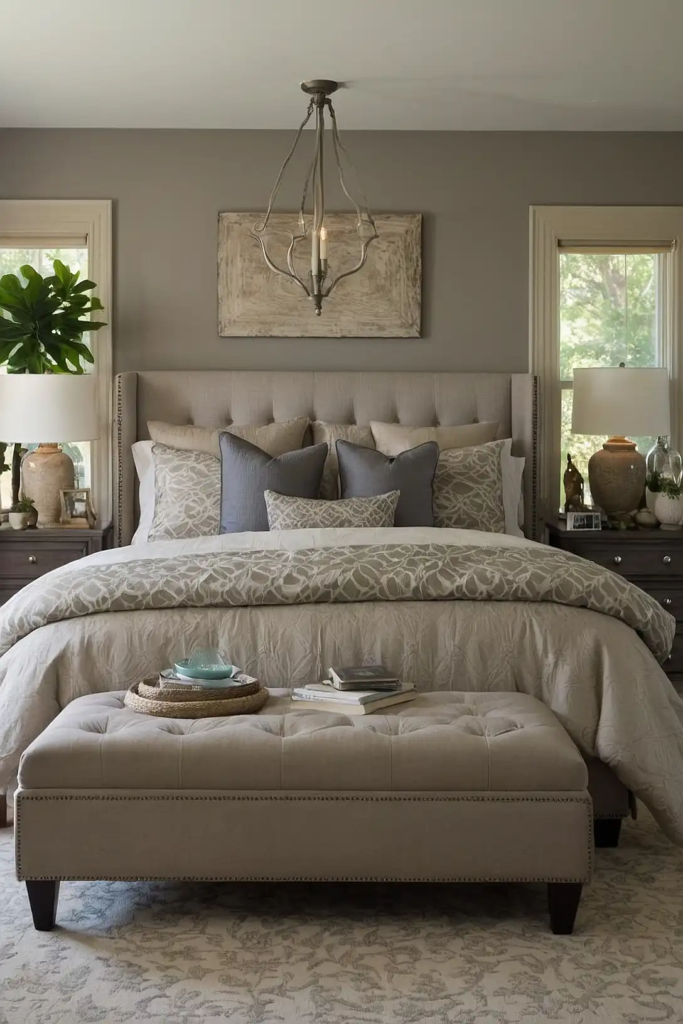
The perfect marriage of gray and beige, greige offers warmth while remaining thoroughly modern.
This chameleon-like neutral adapts to different lighting conditions and complements virtually any accent color.
Interior designers love greige for its ability to make a space feel simultaneously cozy and sophisticated.
It creates an excellent backdrop for both colorful and neutral décor schemes.
4: Blush Pink
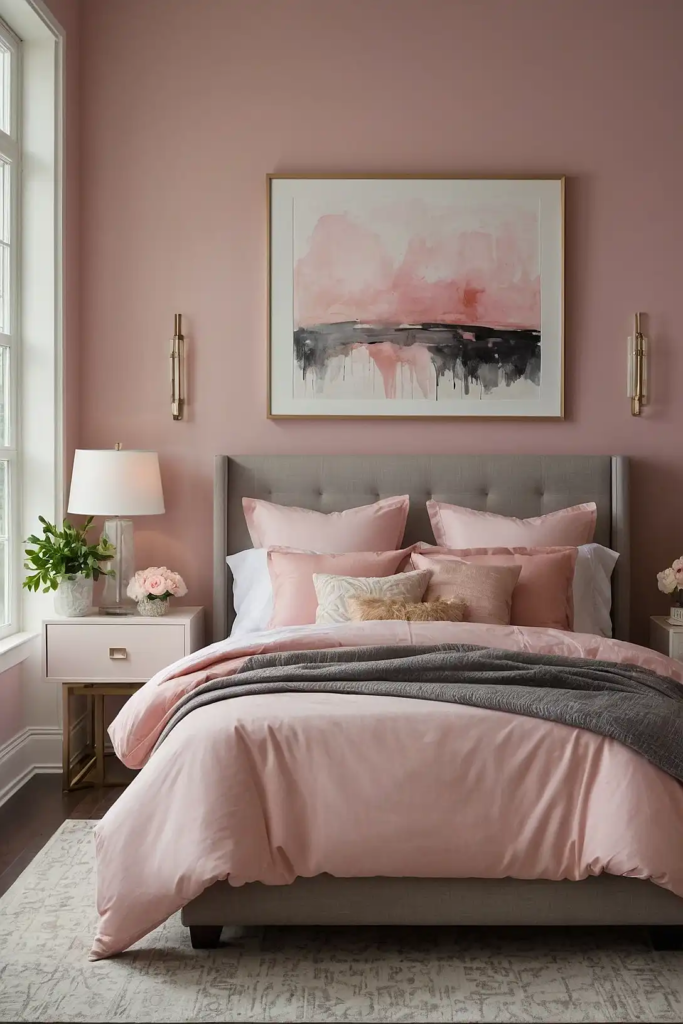
Don’t dismiss pink as too feminine—today’s blush tones are sophisticated and subtle.
This soft, muted pink acts almost as a neutral while adding warmth and a touch of romance.
Blush walls pair beautifully with gray, navy, or emerald green accents.
The color flatters most skin tones and creates a gentle glow, especially in rooms with warm lighting.
5: Charcoal Gray
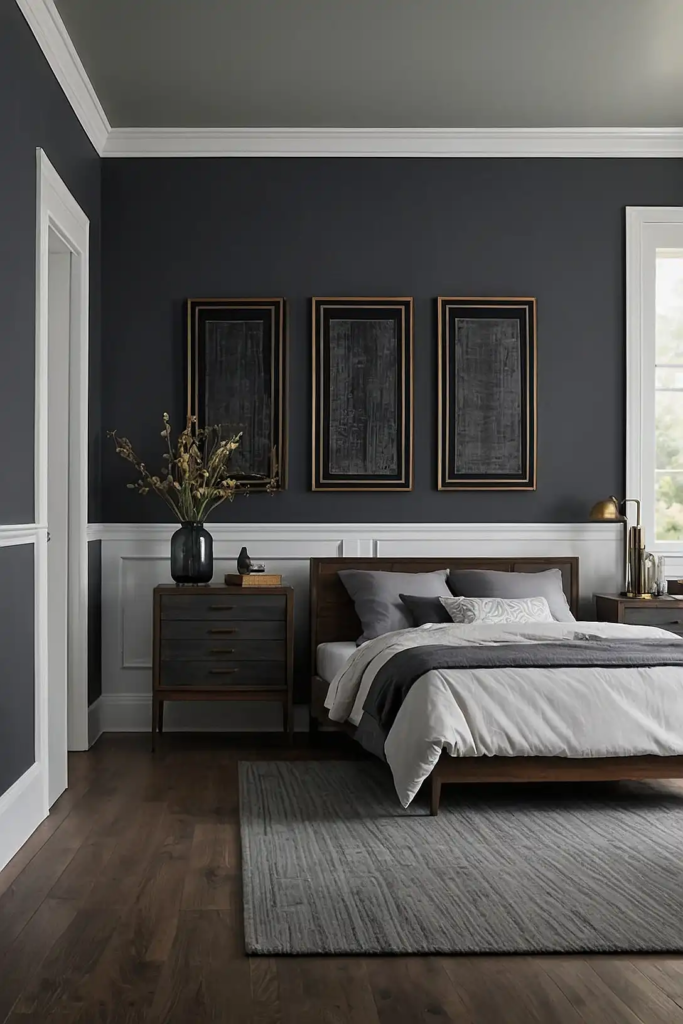
For a modern, dramatic look that doesn’t overwhelm, charcoal gray delivers.
This deep neutral creates a cocoon-like effect while providing a sophisticated backdrop for artwork and décor.
Charcoal works especially well in spacious rooms or those with architectural features you want to highlight.
Pair with crisp white trim and bright accents to prevent the space from feeling too dark.
6: Pale Sky Blue
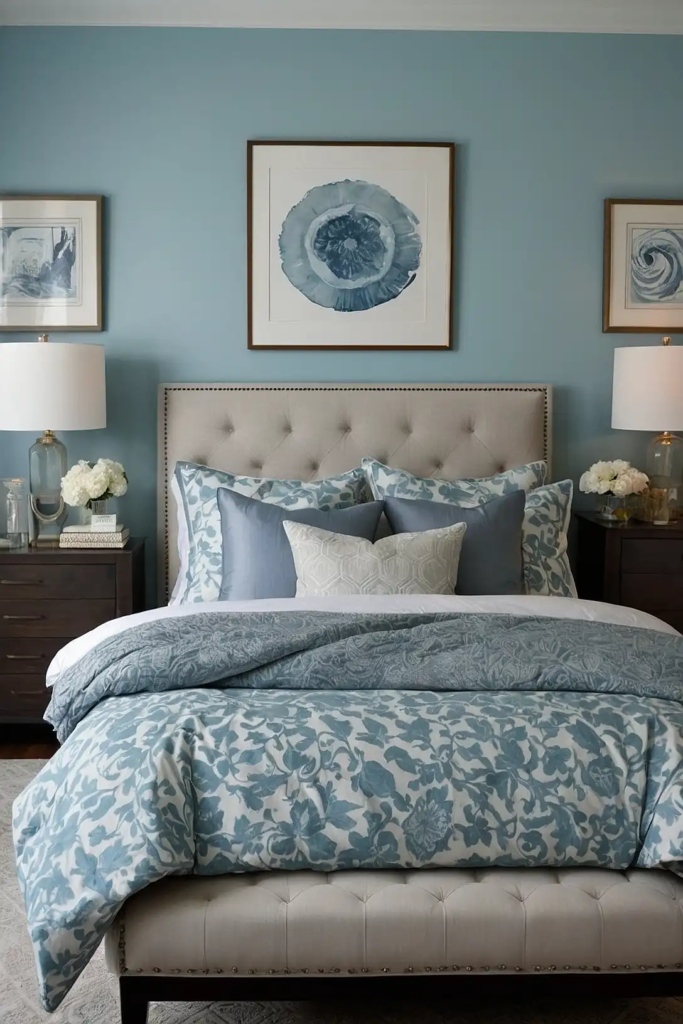
Few colors are as naturally calming as a soft, pale blue reminiscent of clear skies.
This hue has been proven to lower blood pressure and heart rate, making it perfect for restful sleep.
Pale blue pairs beautifully with white, natural woods, and silver accents.
It feels especially appropriate in coastal or traditional décor schemes while maintaining a timeless appeal.
7: Creamy Vanilla
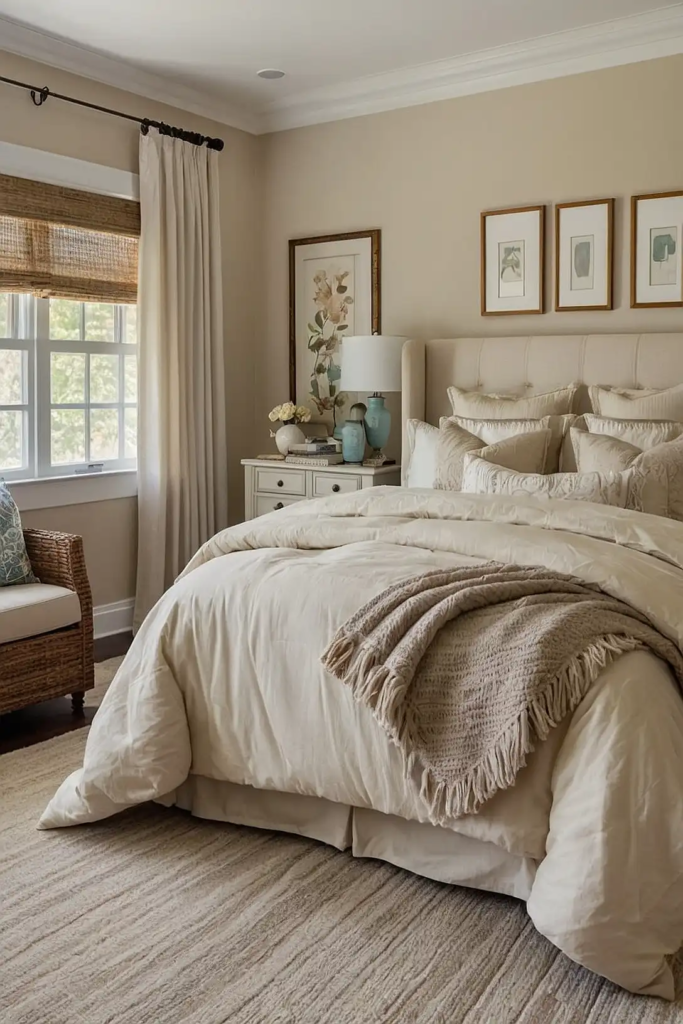
This warm white option offers more depth than stark white while maintaining brightness and versatility.
Vanilla creates a soft, diffused glow that makes bedrooms feel welcoming and peaceful.
The subtle warmth complements most wood tones and works with both modern and traditional furnishings.
It’s an excellent choice if you frequently change your décor, as it adapts to new accent colors effortlessly.
8: Terracotta
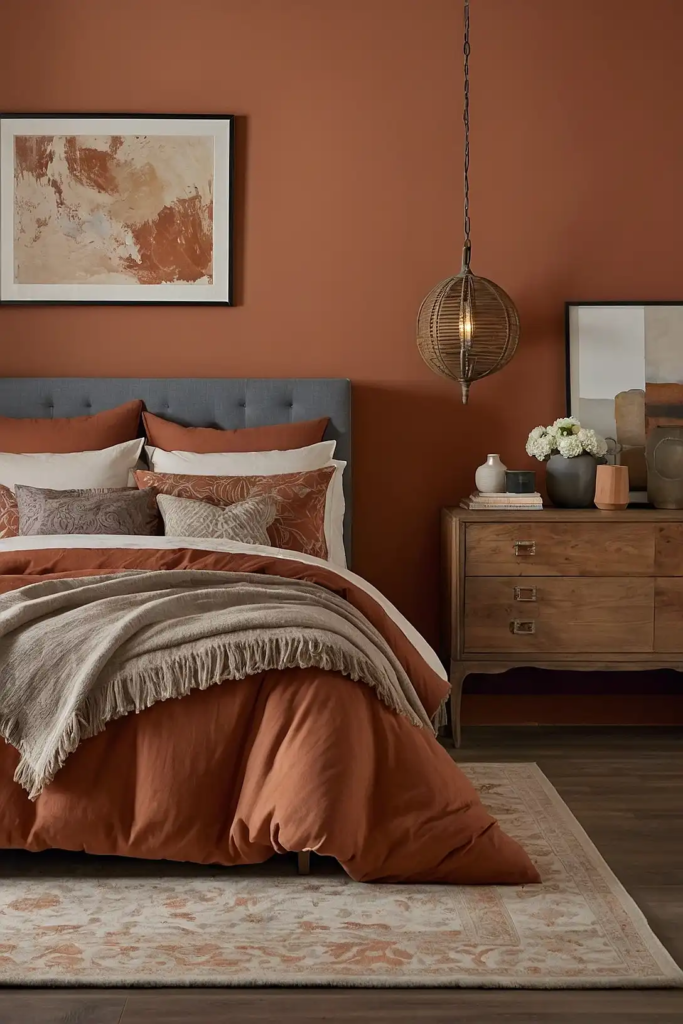
This earthy, clay-inspired hue brings Mediterranean warmth to any bedroom.
Terracotta creates a grounding effect while adding character that plain neutrals sometimes lack.
Pair with creamy whites, natural linens, and brass accents for a sun-baked, relaxed vibe. This color works especially well in rooms that receive plenty of natural light.
9: Soft Lavender

More sophisticated than you might expect, soft lavender combines the calming properties of blue with the warmth of red in perfect balance.
Research shows purple tones can promote creative thinking and peaceful sleep.
This shade pairs beautifully with gray, cream, or even sage green accents. It creates a subtle, unexpected backdrop that feels both fresh and timeless.
10: Muted Teal

This blue-green hybrid brings depth and character while maintaining a serene vibe.
Muted teal creates a sophisticated, slightly mysterious atmosphere that feels both current and timeless.
Pair with brass accents and neutral bedding for a balanced look.
This shade works particularly well in rooms with traditional architectural details or in contemporary spaces needing personality.
11: Soft Black

Don’t fear the dark—a soft black with subtle undertones creates a remarkably cozy, cocoon-like bedroom.
This dramatic choice makes artwork pop and turns ordinary architectural features into statements.
Balance black walls with plenty of texture, light-colored bedding, and adequate lighting. The result is unexpectedly sophisticated rather than gloomy.
12: Pale Taupe
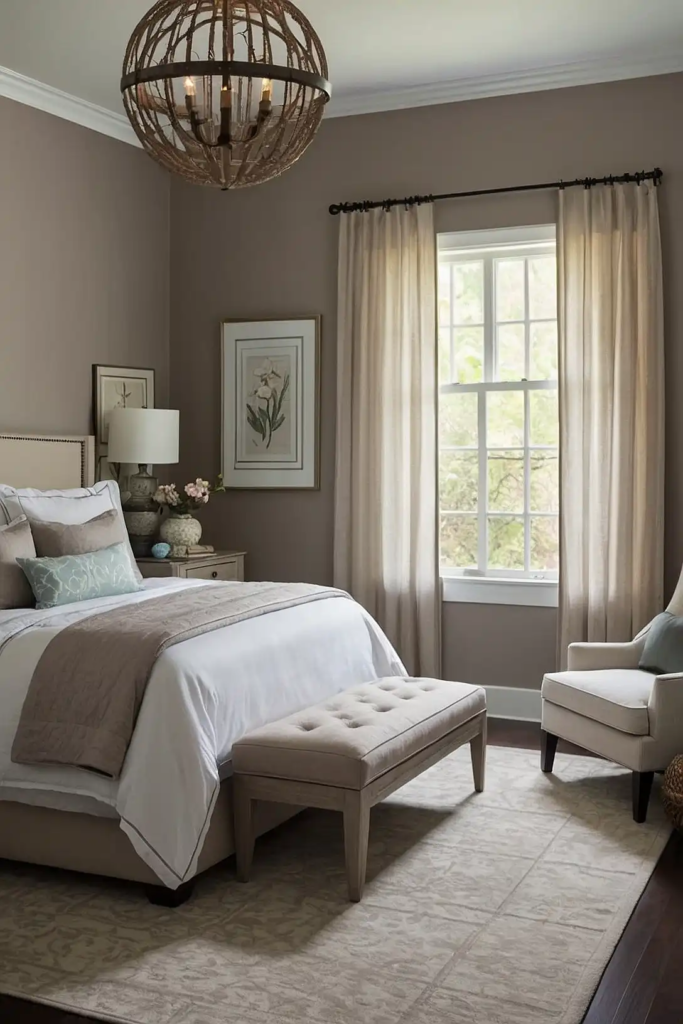
This complex neutral combines the best qualities of beige, gray, and brown for a sophisticated backdrop.
Taupe adapts beautifully to changing light conditions and complements most accent colors.
Designers appreciate taupe for its chameleon-like qualities and ability to make other colors in the room appear more vibrant.
It works in virtually any design style from traditional to contemporary.
13: Dusty Blue
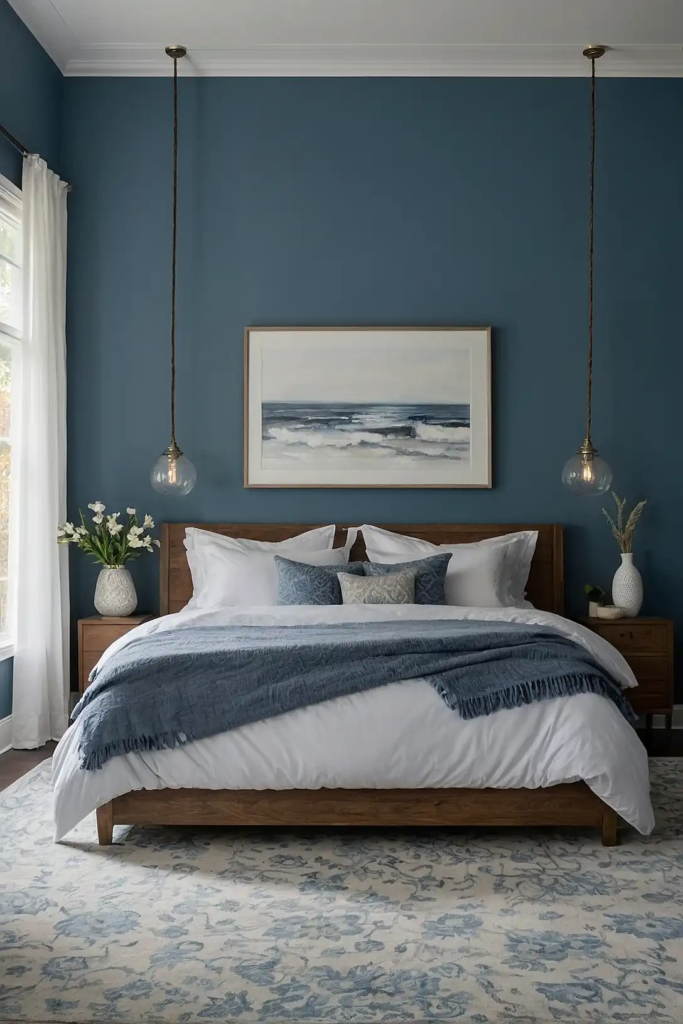
Neither too vibrant nor too pastel, dusty blue offers vintage charm with modern appeal.
This muted shade creates a peaceful atmosphere while adding more personality than typical neutrals.
Pair with cream, gray, or navy accents for a layered, designer-approved look. This versatile color works especially well in traditional or transitional bedrooms.
14: Rich Caramel
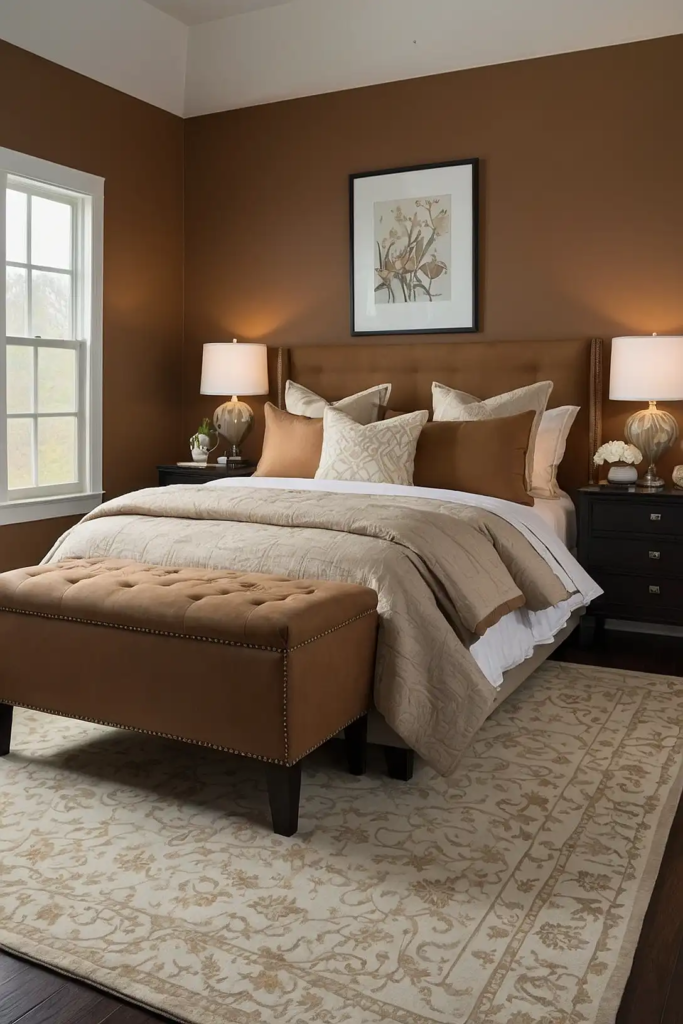
For a bedroom that feels like a warm embrace, consider rich caramel tones.
This sophisticated neutral adds warmth without the yellowness of some beiges or the heaviness of brown.
Caramel walls create a beautiful backdrop for both light and dark furniture.
The color feels especially luxurious when paired with crisp white bedding and touches of black for contrast.
15: Soft Olive Green
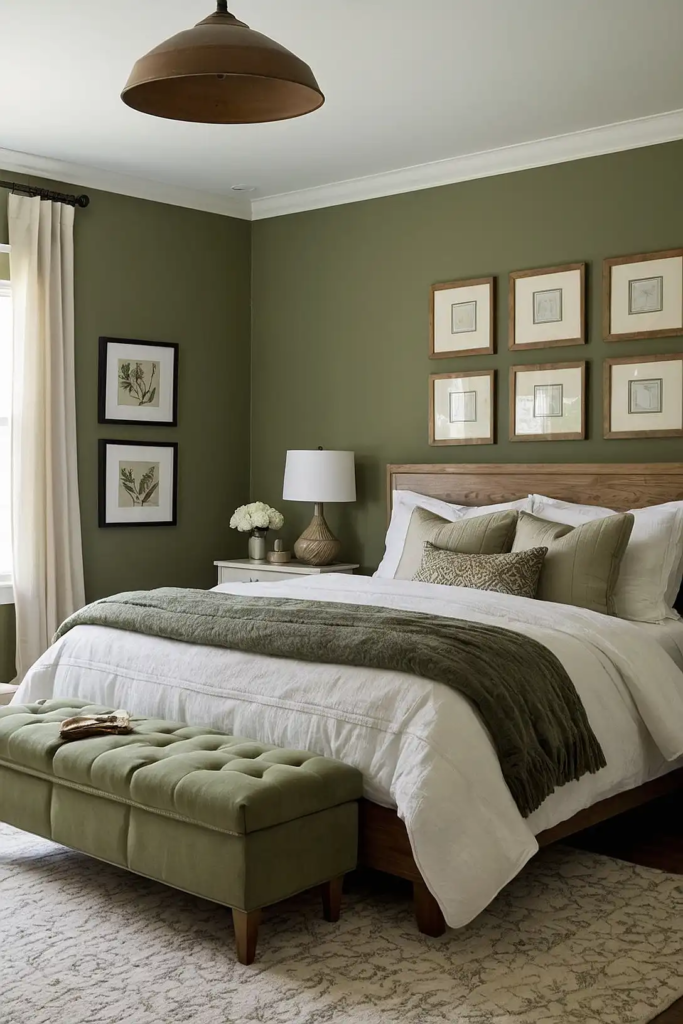
This earth-inspired tone brings nature’s calming influence indoors while offering more sophistication than brighter greens.
Olive creates a grounding effect that promotes relaxation and rest.
Pair with natural linens, creamy whites, and touches of black for a balanced look. This versatile shade works in both traditional and contemporary settings.
16: Pale Aqua
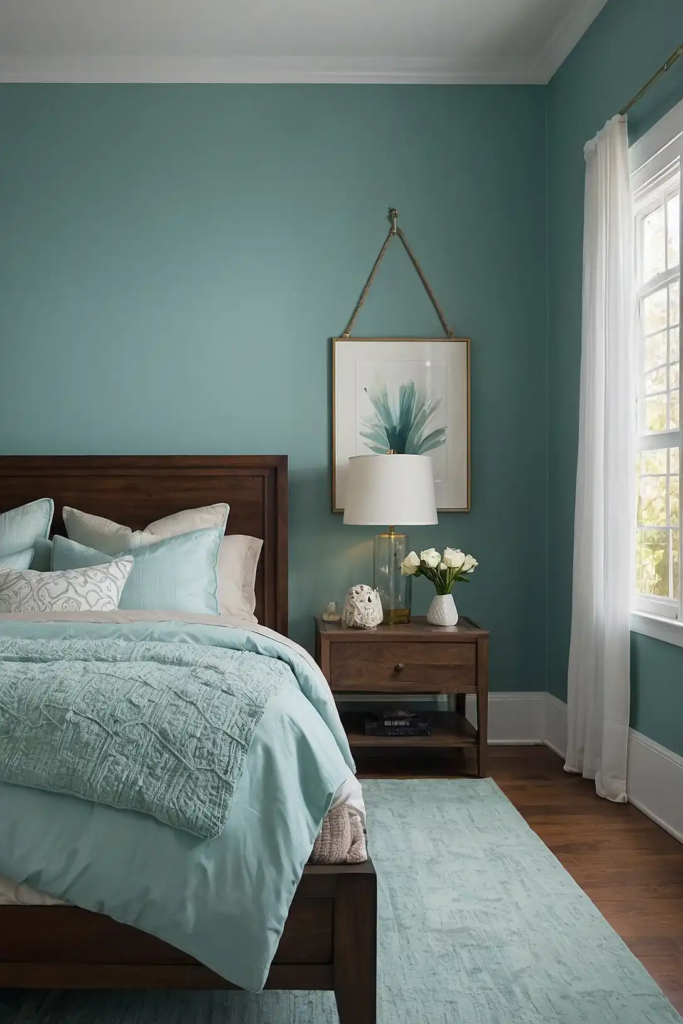
Lighter than teal but more interesting than plain blue, pale aqua evokes tranquil water and clear skies.
This refreshing color promotes relaxation while maintaining a cheerful undertone.
Works beautifully with white, natural woods, and subtle gray accents. Pale aqua feels especially appropriate in coastal-inspired or contemporary bedrooms.
17: Warm Stone Gray
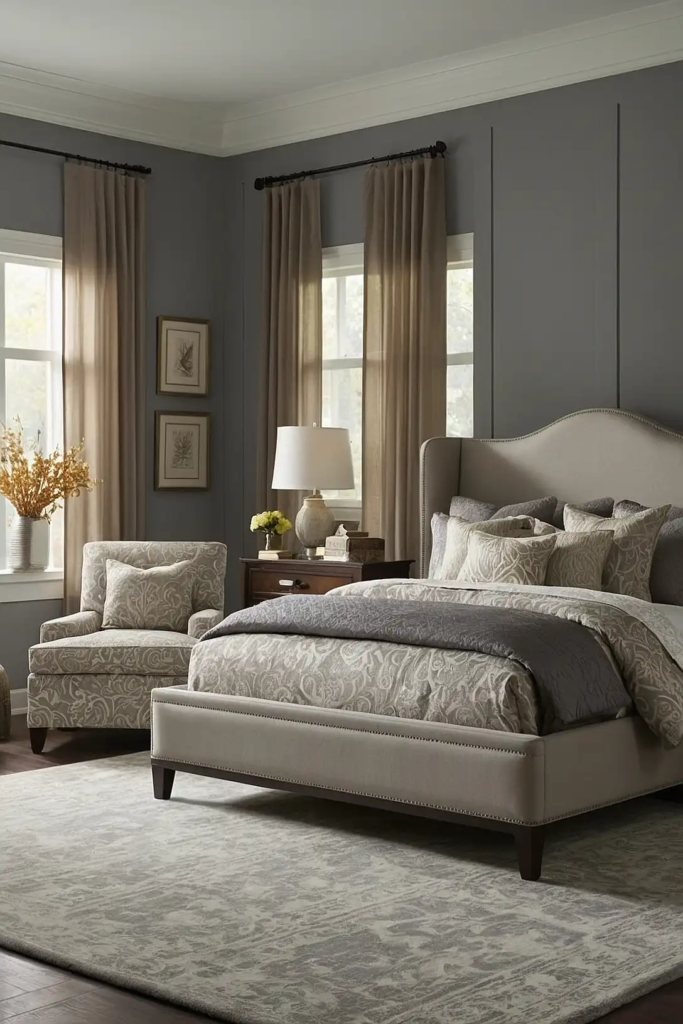
This nuanced neutral has subtle warm undertones that prevent it from feeling cold or institutional.
Stone gray creates a sophisticated backdrop that works with virtually any accent color.
Designers appreciate its versatility and ability to make a space feel simultaneously cozy and refined. This shade pairs especially well with natural textures and tones.
18: Dusty Rose
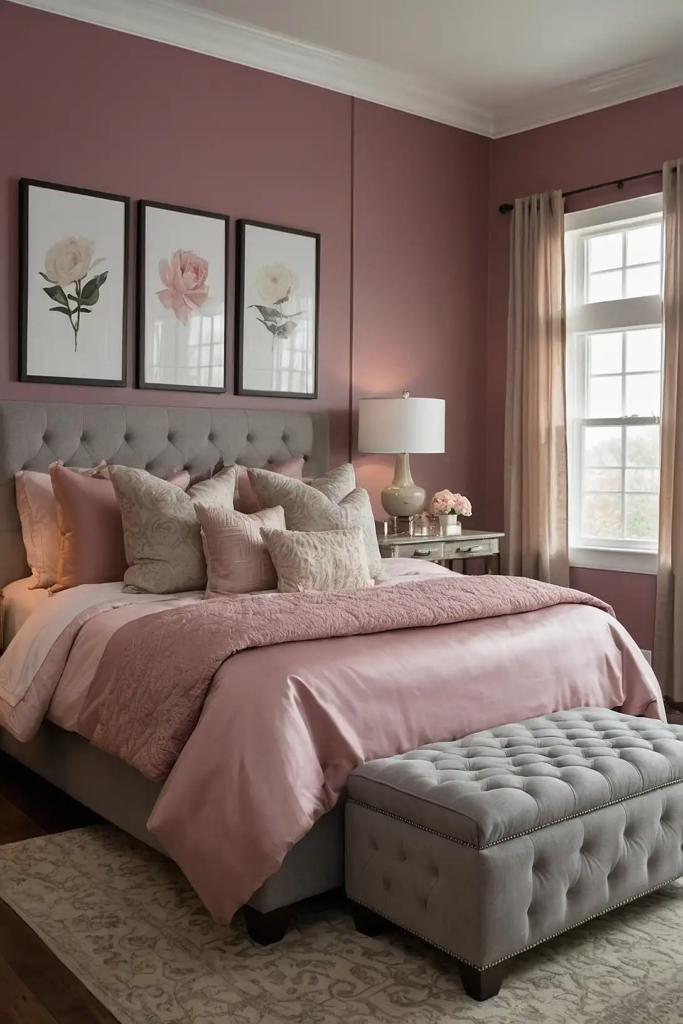
More mature than pink but warmer than mauve, dusty rose creates an unexpectedly sophisticated bedroom.
This muted shade flatters most skin tones and creates a subtle glow, especially in evening light.
Pair with gray, cream, or even navy accents for a balanced look.
This color works in both traditional and modern settings, adding warmth without overwhelming the space.
19: Slate Blue
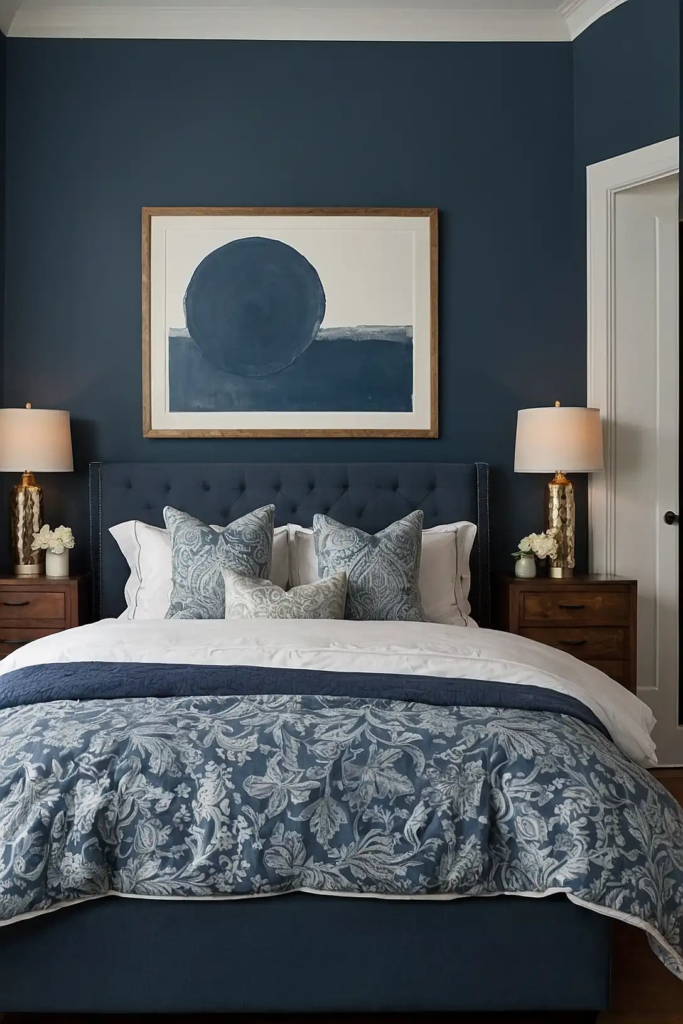
This deep, muted blue-gray creates a serene atmosphere with more depth than lighter blues.
Slate blue promotes restful sleep while adding sophisticated character to your bedroom.
Pairs beautifully with cream, natural wood tones, and brass or bronze accents. This versatile color works in traditional, transitional, or even modern bedrooms.
20: Warm Ivory
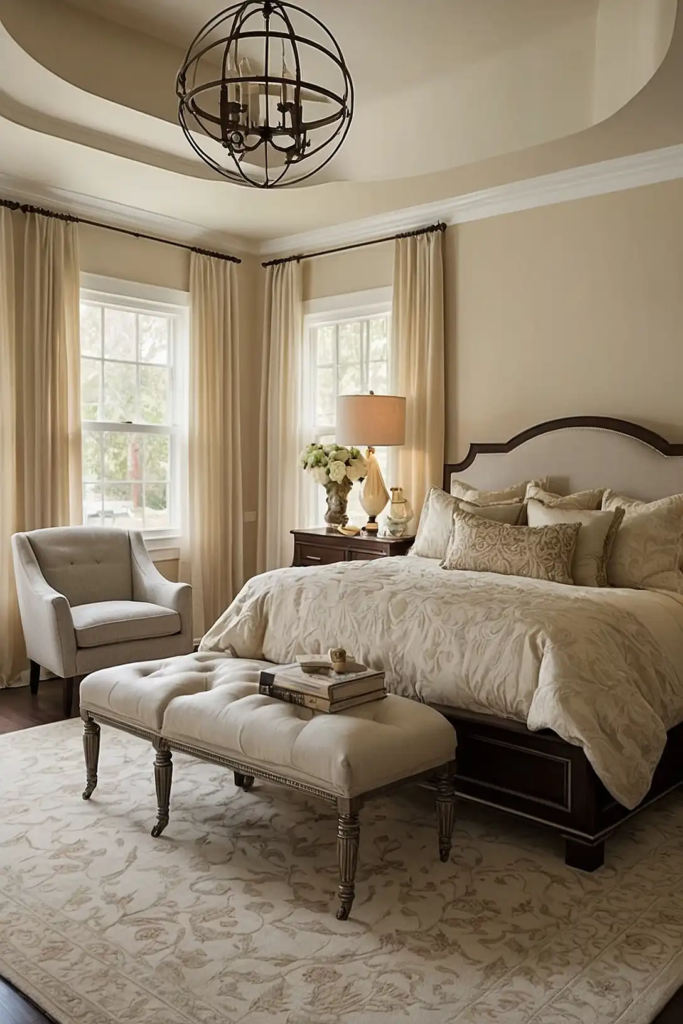
Richer than white but still light and airy, warm ivory creates a soft, diffused glow in bedrooms.
This versatile neutral complements virtually every design style and color palette.
Ivory walls make artwork and colorful accents stand out while maintaining a peaceful backdrop.
This timeless choice works particularly well in rooms with limited natural light.
21: Soft Wheat
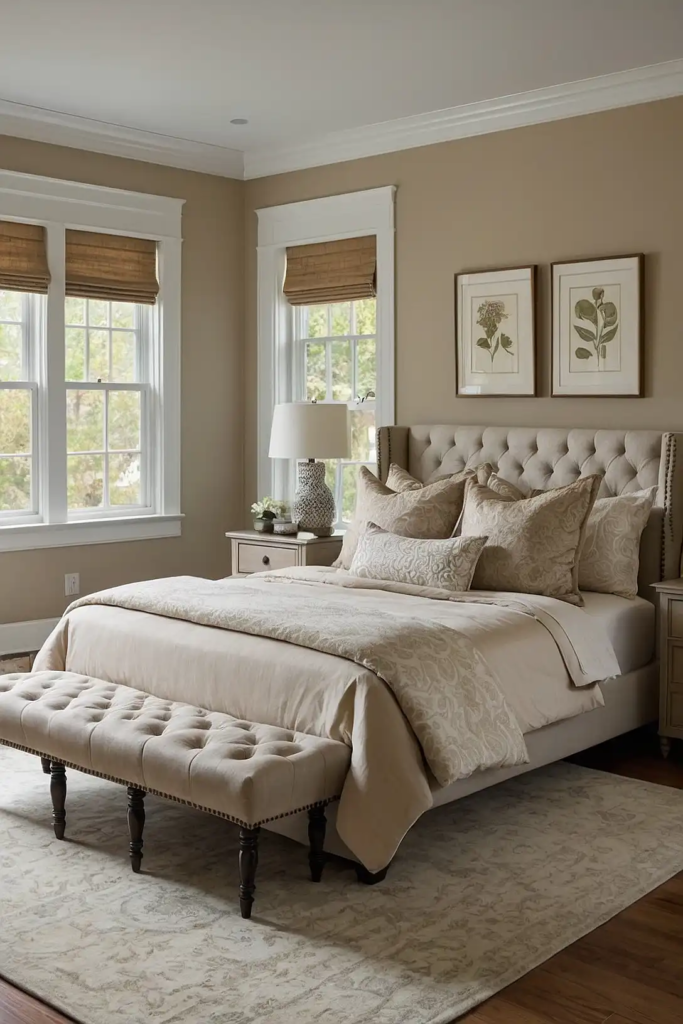
This natural, golden-tinged neutral brings warmth without the yellowness that can make some beiges challenging.
Wheat creates a subtle glow that makes bedrooms feel welcoming and relaxed.
Pairs beautifully with various wood tones, whites, and virtually any accent color.
This versatile shade works in both modern farmhouse and sophisticated contemporary settings.
22: Deep Emerald
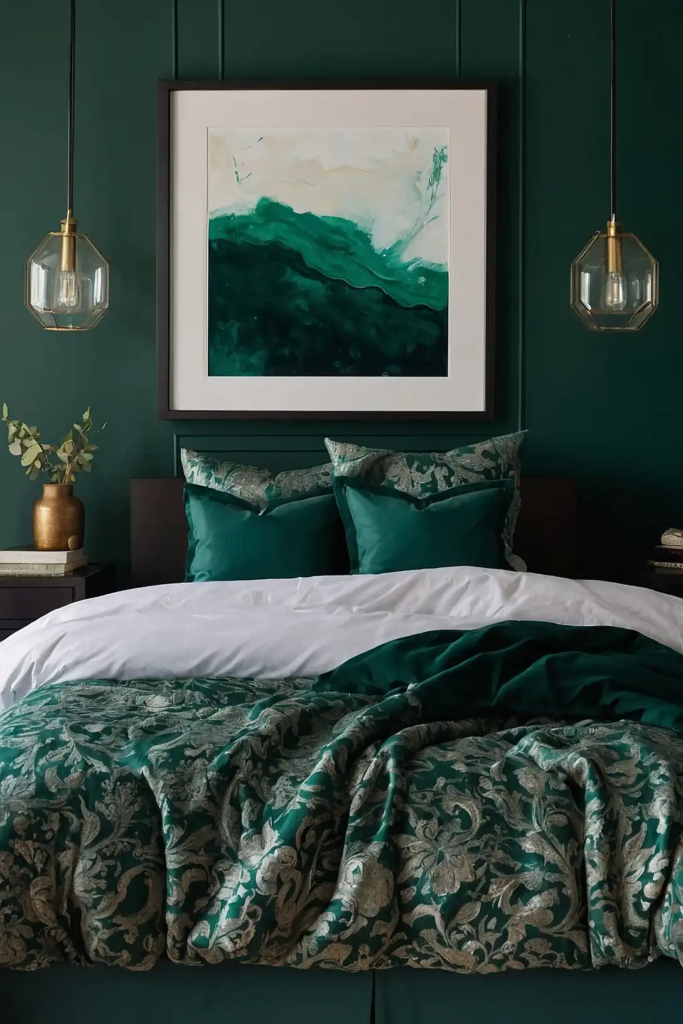
For dramatic luxury that still promotes rest, deep emerald delivers.
This jewel tone creates a cocoon-like effect while adding rich character that basic neutrals can’t match.
Balance emerald with plenty of white, cream, or brass accents to keep the room from feeling too dark.
This bold choice works surprisingly well in both large and small bedrooms.
23: Pale Gray-Green
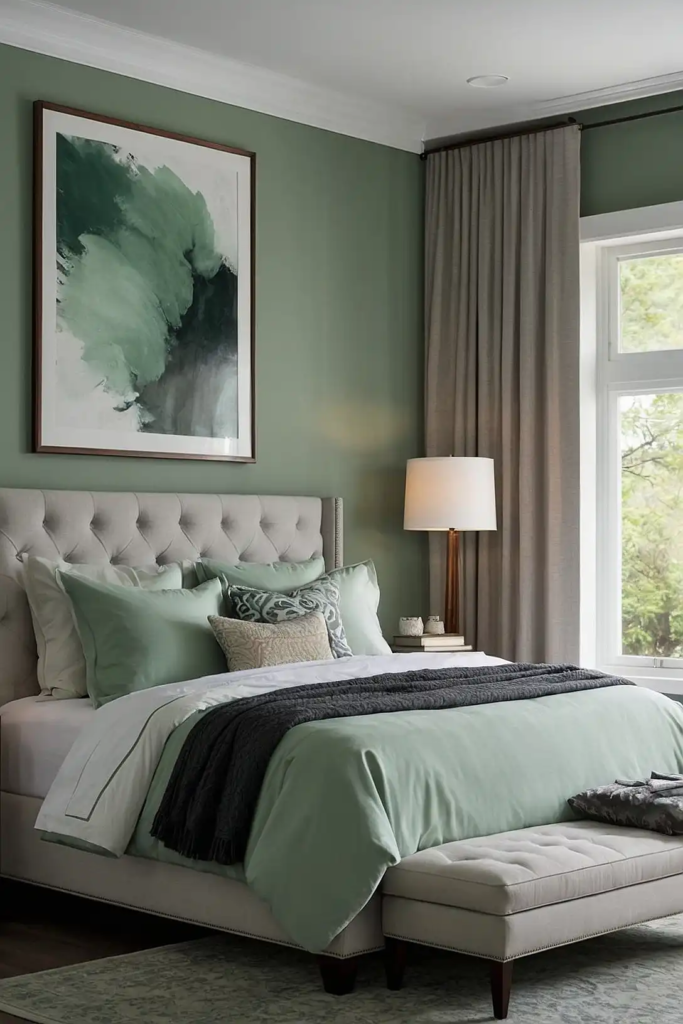
This subtle hybrid combines the freshness of green with the sophistication of gray.
Gray-green creates a calming atmosphere that feels connected to nature without being overly colorful.
Designers appreciate its versatility and ability to shift appearance throughout the day. This chameleon-like shade works with both warm and cool accent colors.
24: Soft Mushroom
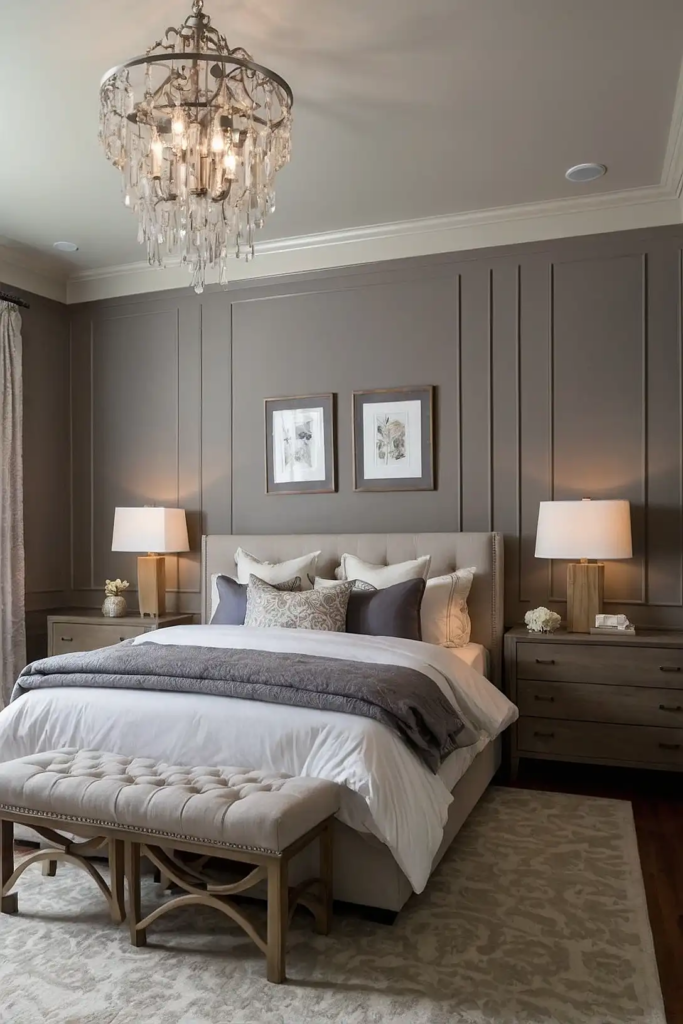
This complex neutral with subtle purple-gray undertones creates depth without darkness.
Mushroom offers a sophisticated alternative to basic beige while maintaining a restful quality.
Pairs beautifully with creamy whites, natural textures, and both light and dark wood tones. This versatile color works in virtually any design style.
25: Pale Pewter
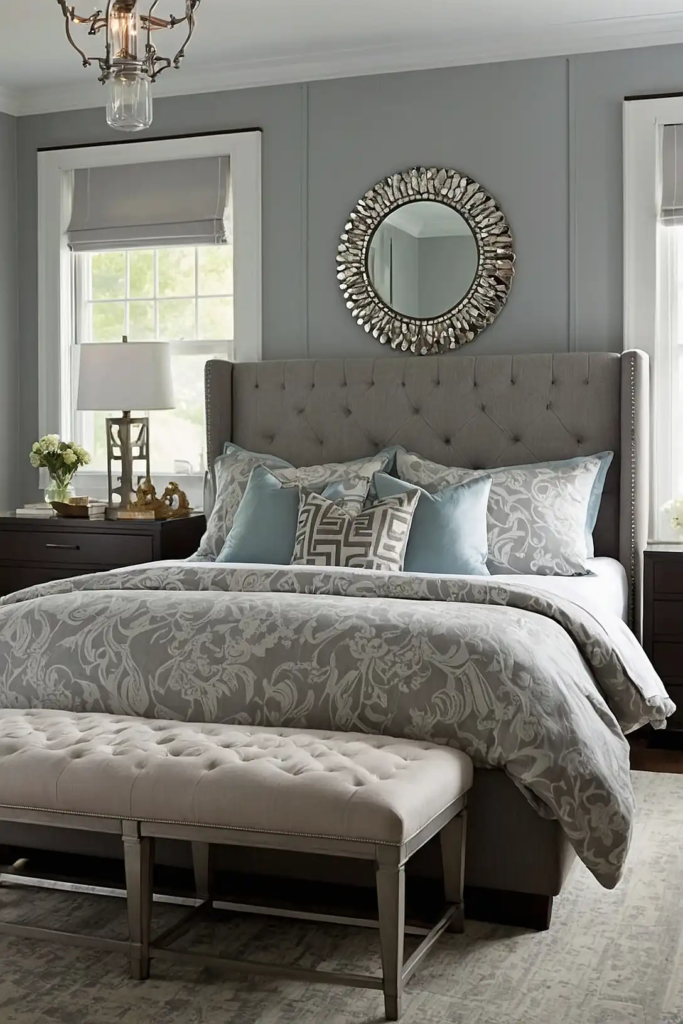
Neither fully gray nor silver, pewter brings subtle metallic qualities to bedroom walls.
This sophisticated neutral changes throughout the day, creating visual interest without overwhelming the space.
Designers love pewter for its ability to make other colors in the room appear more vibrant. It’s especially effective in rooms with interesting architectural features.
26: Muted Coral
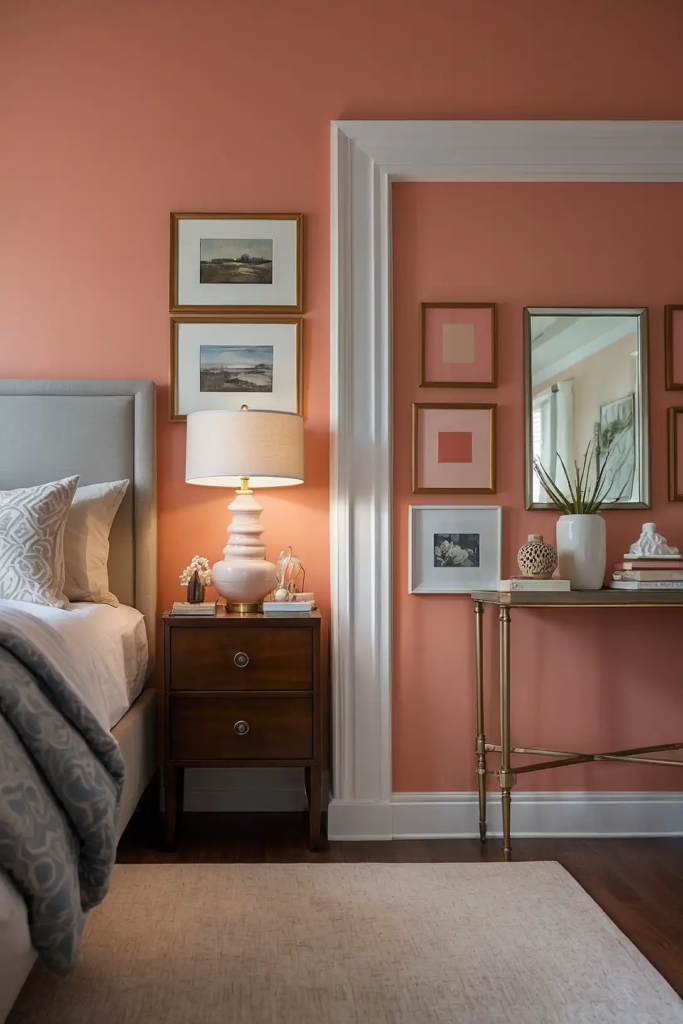
Softer than traditional coral but warmer than pink, this complex hue brings gentle energy to bedrooms.
Muted coral creates a flattering glow that makes the space feel welcoming and special.
Pair with cream, gray, or even navy accents for a balanced look. This unexpected choice adds personality while still promoting restful sleep.
27: Classic French Blue
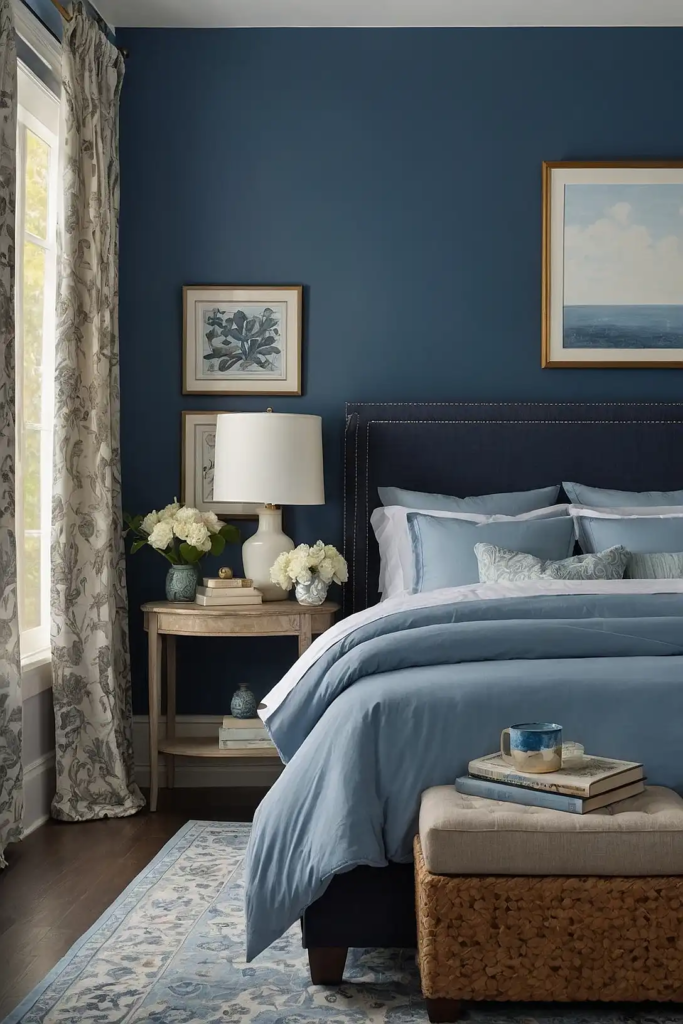
This timeless blue has endured for centuries because it perfectly balances vibrancy and tranquility.
French blue creates a peaceful atmosphere while adding more character than typical pale blues.
Pairs beautifully with white, cream, and natural wood tones. This versatile color works in traditional, country French, or even modern farmhouse settings.
Conclusion
The perfect bedroom color creates your ideal atmosphere—whether that’s serene and calming or rich and cozy.
Choose a shade that speaks to you personally, and you’ll create a master bedroom retreat you’ll love for years to come.

